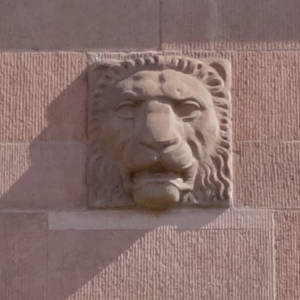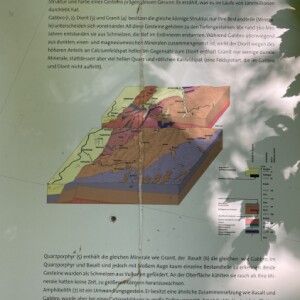Stone Circle
…demonstrating the sorts of rocks to be found in the Odenwald region. This is part of an educational forest trail near Ober-Ramstadt.
From left to right there are: —
1+2: Gabbro, 3: Diorite, 4: Granite, 5: Quartzporphyr, 6: Basalt, 7: Amphibolite, 8: Red Sandstone.
Translation of the information board: —
“ROCKS OF THE ODENWALD
The structure and colour of a rock characterise its face. It tells what it has been through over millions of years.
Gabbro (1,2), Diorite (3) and granite (4) have the same granular structure, only their components (minerals) differ from each other. All these rocks belong to the deep rocks. About 360 million Years ago, they were formed from melts that solidied deep in the earth's interior. While gabbro is predominantly composed of dark minerals, rich in iron and magnesium, the diorite is lighter because of the higher proportion of calcium feldspar. Unlike diorite, granite contains only a few dark minerals, but instead contains a lot of light quartz and reddish potassium feldspar (a type of feldspar that does not occur in gabbro and diorite).
Quartz porphyry (5) contains the same minerals as granite, basalt (6) the same as gabro. In quartz porphyry and basalt, however, individual components can hardly be seen with the naked eye. Both rocks were extracted as melts from volcanos. They cooled quickly on the surface. Their minerals did not have time to grow into larger grains.
Amphibolite (7) is a transformational rock. It has a similar composition as basalt and gabbro, but was sunk in great depths during a mountain formation. Amphibolite can be split into plates. His minerals were placed under high pressure and high temperatures in an area, which created this "shale”.
Coloured sandstone (8) was formed from loose sand, which was transported by rivers 251 to 243 million years ago. The sand developed into solid sandstone when the individual grains of sand were knitted together by clay, iron oxide, quartz and lime.“


Comments
Sign in or get an account to comment.


